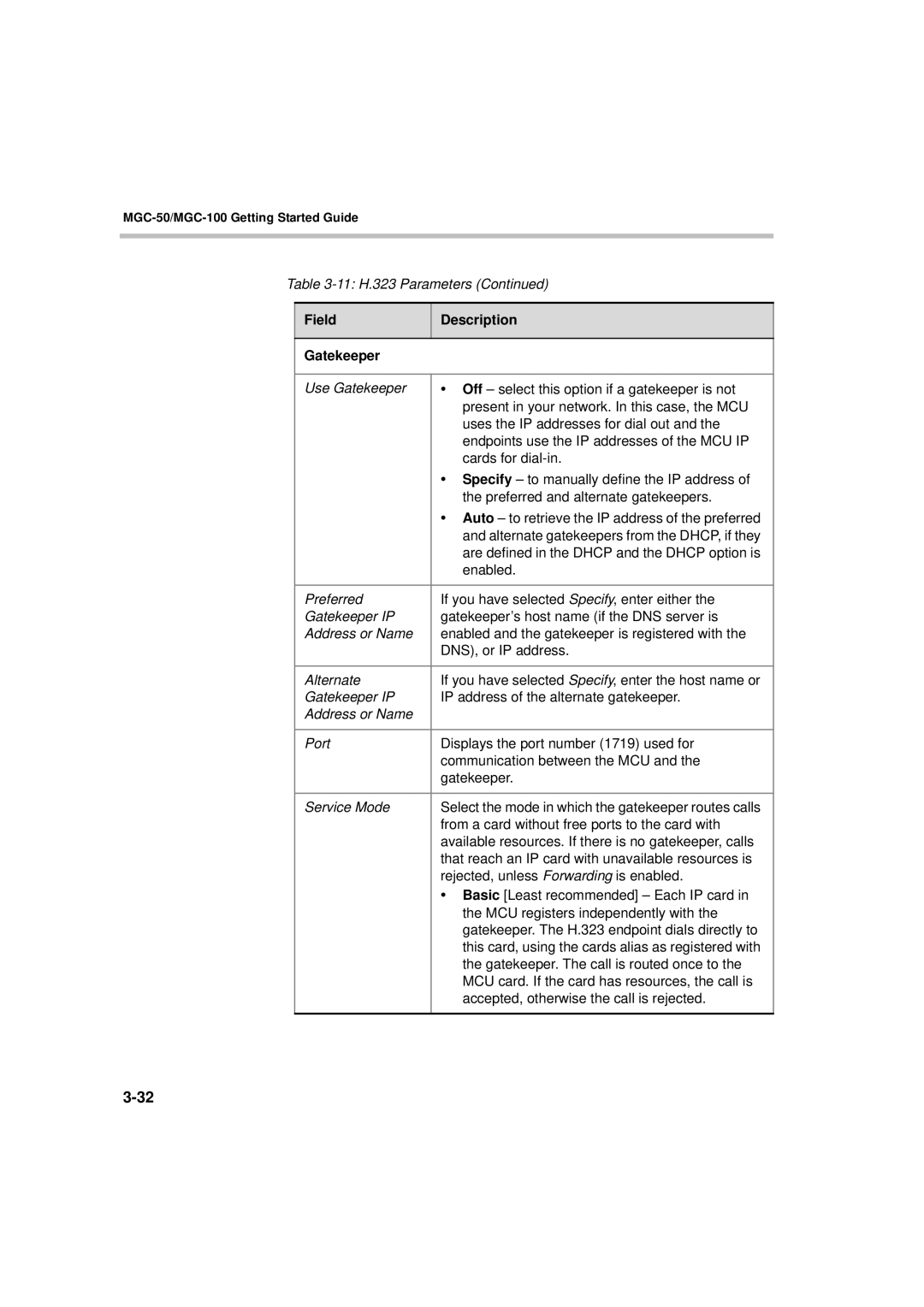MGC-50/MGC-100 Getting Started Guide
Table
Field | Description |
|
|
Gatekeeper |
|
|
|
Use Gatekeeper | • Off – select this option if a gatekeeper is not |
| present in your network. In this case, the MCU |
| uses the IP addresses for dial out and the |
| endpoints use the IP addresses of the MCU IP |
| cards for |
| • Specify – to manually define the IP address of |
| the preferred and alternate gatekeepers. |
| • Auto – to retrieve the IP address of the preferred |
| and alternate gatekeepers from the DHCP, if they |
| are defined in the DHCP and the DHCP option is |
| enabled. |
|
|
Preferred | If you have selected Specify, enter either the |
Gatekeeper IP | gatekeeper’s host name (if the DNS server is |
Address or Name | enabled and the gatekeeper is registered with the |
| DNS), or IP address. |
|
|
Alternate | If you have selected Specify, enter the host name or |
Gatekeeper IP | IP address of the alternate gatekeeper. |
Address or Name |
|
|
|
Port | Displays the port number (1719) used for |
| communication between the MCU and the |
| gatekeeper. |
|
|
Service Mode | Select the mode in which the gatekeeper routes calls |
| from a card without free ports to the card with |
| available resources. If there is no gatekeeper, calls |
| that reach an IP card with unavailable resources is |
| rejected, unless Forwarding is enabled. |
| • Basic [Least recommended] – Each IP card in |
| the MCU registers independently with the |
| gatekeeper. The H.323 endpoint dials directly to |
| this card, using the cards alias as registered with |
| the gatekeeper. The call is routed once to the |
| MCU card. If the card has resources, the call is |
| accepted, otherwise the call is rejected. |
|
|
